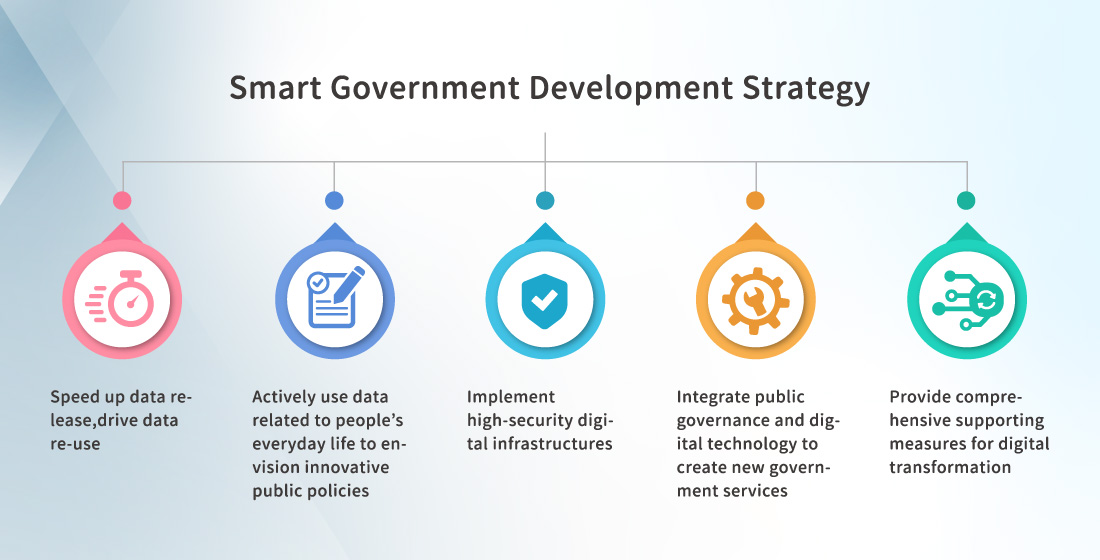Smart Government Development Strategy
Taiwan has been promoting a digital government policy since 1996, and in 2019, the goal officially transformed into developing a smart government. The overall vision of the digital government policy has transformed gradually from developing basic internet-based digitization and providing online services to focusing on data- and people-centric governance models. With the growth of the government’s digital capabilities, the next step of digital governance is to advance data-centric government decision-making environments and abilities, thus achieving the goal of building a high-quality, accessible, valuable, innovative, and agile digital governance model. In addition to maintaining transparency in the government and expanding the scope of public-oriented services, the quality of government policies will also be improved. Strategies for promoting smart government policies are as follows:
- Speed up data release, drive data re-use
Plan and build public inquiry mechanisms and release procedures for data with high application value. Entrust government agencies to prioritize releasing data with high application value and create a standard model for inter-data application, thus helping agencies to develop knowledge in data governance, analysis, and utilization and reinforcing agencies’ independent data management abilities. - Actively use data related to people’s everyday life to envision innovative public policies
Link and collect data for policy-making with a focus on crucial public issues and key areas of national development. Utilize technology such as big data and artificial intelligence for interdisciplinary data analysis to help the government to make evidence-based decisions quickly and precisely. - Integrate public governance and digital technology to create new government services
Use innovative digital technology and applications to build new digitalized public services including innovative transportation methods, social security smart management, economic development, criminal investigation, and public service capacity improvement to enhance the public’s experience and trust in the government. - Implement high-security digital infrastructures
Build solid backbone network mechanisms for the government service network (GSN) with software-defined networking (SDN). Gradually increase public service exchange point interconnection bandwidth every year according to telecommunication and innovative technology developments. Enhance digital backup and resilience and improve management systems to ensure data security. Additionally, ensure data access authorization and the security of government internet services with multi-factor authentication and verification mechanisms. - Provide comprehensive supporting measures for digital transformation
Inventory required digital abilities of government staff members at all levels and design programs for improving government staff members’ digital or data decision-making abilities. Build digital competency maps, plan the interdisciplinary digital education of government staff members, implement government digital personnel training courses, and complement them with relevant assessment mechanisms or certifications when necessary.
